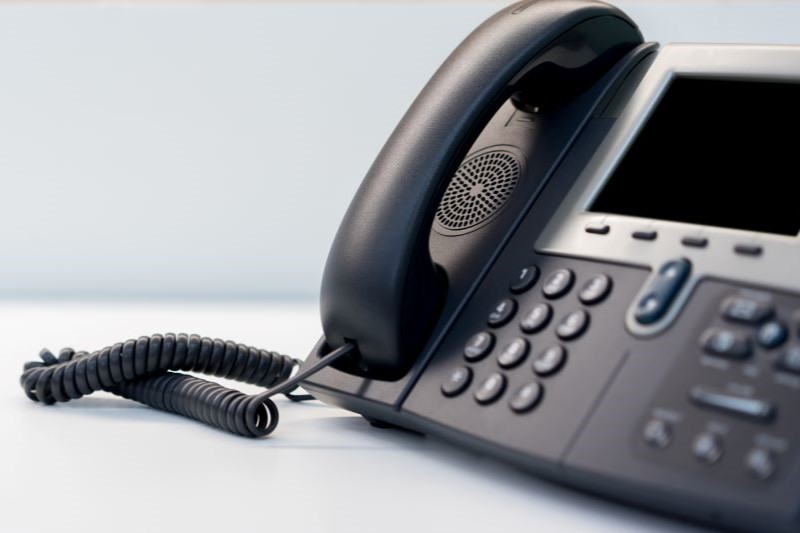
Thinking of upgrading your phone system from POTS to VoIP? You might be wondering exactly what to expect if you make the switch. Understanding the differences between the two options will help you determine which phone type is best for your business. America’s Phone Guys, we want to help. As your local phone experts in the Vancouver Metro area, we have listed out everything you need to know about VoIP versus POTS phone systems.
What Is a POTS Line?
POTS stands for “Plain Old Telephone Service”, and that’s what it really means. It’s the traditional telephone line that sends information over copper wires or fiber optics to a circuit network. This type of phone is also commonly referred to as a landline or PSTN (Public Switched Telephone Network).
What Is a VoIP Phone System?
VoIP stands for “Voice over Internet Protocol”, and it is a phone system that operates purely over the Internet. This type of phone works by breaking your voice down into small data packets, which are then sent through your router to another IP address.
How Is VoIP Different From POTS?
The main difference is that VoIP sends communication over the Internet, while POTS uses a traditional circuit-switched telephony. So, rather than using copper wires and analog devices, VoIP integrates with your smart device to send or receive information through the Internet.
Is VoIP Better than POTS?
Though both VoIP and POTS are capable of making and receiving calls, VoIP is quickly emerging as the better phone system for small businesses. Since VoIP is more cost-effective and packed with advanced features, you get a lot more functionality and value than you would out of a traditional phone line. With VoIP, you can enjoy benefits such as:
- Customizable features: Modern VoIP phones are packed with advanced capabilities, from auto attendants and conference bridging to custom hold messages and call logging. Whatever you need, VoIP has it at an affordable rate.
- Superior call quality: Though this wasn’t always the case, VoIP phones have come a long way in the last several years. Nearly all have been upgraded with advanced high-definition codecs for clearer voice quality and less background noise.
- Integration ability: If a client calls you through VoIP, you’ll immediately know who is calling and be able to pull up their full account details. This can speed up daily work and create a more positive customer experience.
- Less hardware: Say goodbye to needless hardware like copper wires, fax machines, and analog phones. For VoIP, all you need is a stable Internet connection. You can download the necessary software onto a variety of devices, such as tablets, mobile phones, or laptops.
- Easy integration and operation: VoIP phones are designed to simplify your workday, and they are very intuitive to operate. Despite having more features than POTS lines, VoIP is often much easier to use with minimal training.
Does VoIP Cost More than POTS?
No, VoIP phone lines are generally less expensive than POTS lines. You can find basic VoIP that starts at around $20 per month per seat, while a traditional phone service may run you significantly more. Long-distance calls also cost significantly less over VoIP, making it a great option for companies that do business internationally or across state lines. Additionally, all of the advanced features can save your staff time while preventing missed business due to missed calls, saving you even more in the long run.
Your Local Business Phone Provider
We get it – switching your phone system seems like a huge hassle, especially if you’re not sure you’ll notice the difference. But this is one change that’s worth it. You’ll immediately notice improved call quality, and ease of use, and you’ll probably also pay less. If you set up VoIP through America’s Phone Guys, you’ll also get vastly superior customer service.
If you’re a business owner in the Vancouver Metro area, let America’s Phone Guys put together a VoIP Phone System for you. We offer state-of-the-art fully integrated VoIP phone equipment and a wide range of VoIP phone plans that are designed to meet your business needs. We’ll also take care of installation, and in case anything ever goes wrong, we’re ready to handle any needed repairs. Ready to take your business into the future with VoIP phone service? Give us a call today for a quote!
Back to VoIP ProvidersVoIP vs. POTS (Plain Old Telephone Service) Lines in Portland OR - Vancouver WA - Oregon Coast
SERVING CLIENTS IN NW OREGON AND SW WASHINGTON
